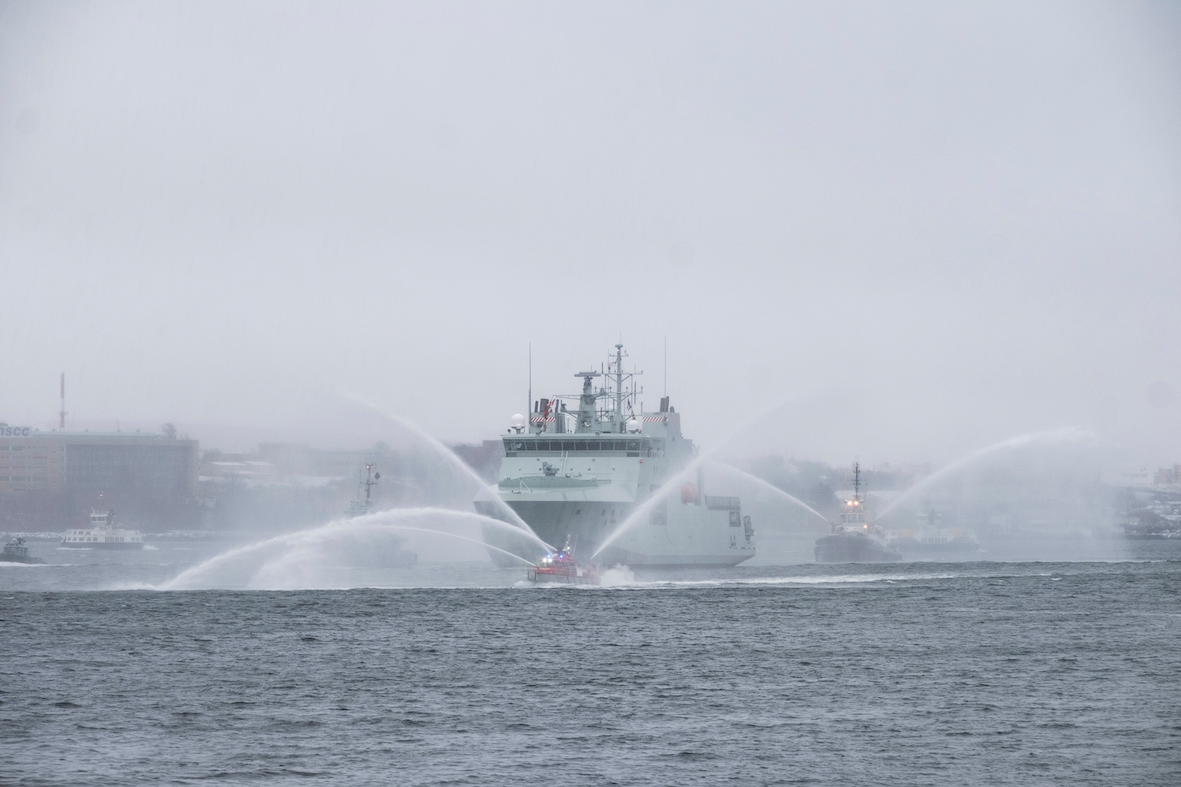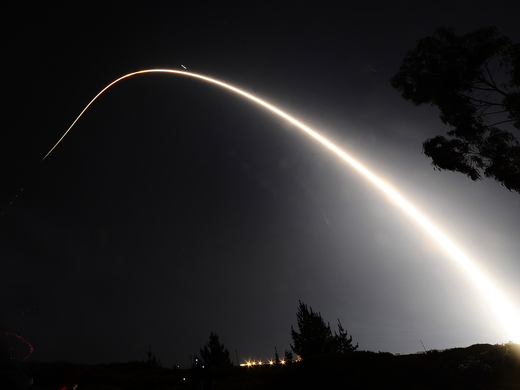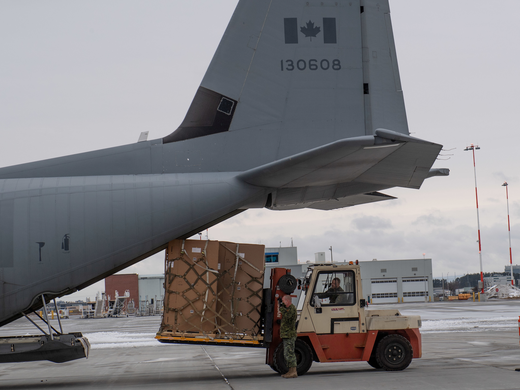Canada’s new defence policy, released on April 8, 2024, makes two big promises. One is to enhance the protection of Canada’s sovereignty and interests in the Arctic; the other is to remake the Canadian Armed Forces (CAF) as a technologically advanced fighting force. Both promises will require big spending increases over an extended period.
The most significant advancement, however, may have less to do with high-tech systems and more to do with Canadian defence thinking at large, where the pivot to the Arctic will require new political and public support.
The long-awaited policy defines Arctic security as “our most urgent task,” which is made clear by its title — Our North, Strong and Free — and by the cover illustration of a Canadian frigate navigating through ice-free waters under the northern lights. The need for greater attention to the Arctic is premised on the massive impacts of climate change, which will open the region to maritime transit and resource exploitation, and on heightened geopolitical tensions in the region, including Russian and Chinese activities. It also aligns with commitments to restore Canadian capabilities as part of the North American Aerospace Defense Command’s (NORAD’s) joint defence mission with the United States. Canada is already planning a new deployment of Arctic and polar “over-the-horizon” radar installations.
The new-look defence of the Arctic will include enhanced basing capabilities, a fleet of airborne early-warning aircraft (AWACS, of which the CAF currently has none), deployment of ground and under-sea sensor capabilities to monitor activities in the region, the building of a satellite ground station in the Arctic to increase the capacity to utilize data from space platforms, enhanced foreign intelligence capabilities, and new tactical helicopters that can operate in the High North.
Alongside these capabilities, the defence policy indicates that the government will “explore options” for a new submarine fleet with operational capacity under the ice. The prime minister even hinted, during a press conference at CFB Trenton to announce the policy, that Canada might explore the acquisition of nuclear submarines — something that would come with a very hefty price tag.
But if Canada hopes to achieve a technologically cutting-edge military, there are a lot of capability gaps still to be filled, including new weaponry and planning for vastly increased data capabilities in the coming age of artificial intelligence (AI) and quantum computing. Next-generation weaponry would include air-to-air missiles, ground air-defence systems, and long-range, land-based missile and artillery systems. The Department of National Defence (DND) will look at options for acquiring surveillance and strike drones and sophisticated counter-drone capabilities, with much of this based on lessons being learned from Russia’s war against Ukraine.
Command and control of a technologically modernized CAF will require enhanced communications capabilities, more and more of which will be based on satellite systems, including for accurate navigational capacity. This will also demand sophisticated and hardened computer capabilities.
The defence policy also acknowledges the need for Canada to have “much better eyes and ears in space.” This is an area in which Canada lags. However, we are home to cutting-edge technological and industry capabilities, and catching up is possible.
Improving our eyes and ears in space means not just developing an ability to have situational awareness in an increasingly crowded environment of low-Earth orbits, but also creating capacity to use space platforms (satellites and high-altitude unmanned aircraft) to monitor the Earth’s surface for broad security purposes, including collecting intelligence on conflict zones and threats, and monitoring the effects of climate change. Satellites trained on the Arctic will be particularly important for the future of Canadian defence policy.
The DND has developed a project on “Defence Enhanced Surveillance from Space,” which is designed to build on existing capabilities from the older RADARSAT platforms and the trio of new, smaller satellites with Arctic look-down capabilities, known as the “Constellation Mission.” The “Polar Epsilon” project, which became operational in 2022, marks an important step in combining space capabilities for intelligence gathering with ship identification data and ground-based radar tracking.
The DND and its partners are considering releasing a public threat assessment on Arctic security to underpin the new defence policy. This suggests that the defence establishment is looking to bring the public along in thinking about the singular importance of the Arctic to Canada’s defence and broader contribution as an allied partner to the North Atlantic Treaty Organization and NORAD. This is crucial, as spending forecasts for the new defence policy have both a five-year horizon (for a projected $8-billion commitment) and a 20-year horizon (for $73 billion) — big numbers that are beyond the remit of the current or future governments. Political buy-in will be necessary.
The new policy will also be anchored in a commitment to produce a national security strategy every four years. Canada has not done so since 2004, despite multiple independent external appraisals stressing the need for such a strategy to ensure all Canadians understand the nature of the threat environment, what resources and tools will be needed to confront it, and the road map for government action. This innovation, as well as a vow to establish “a more regular cycle of review” for Canadian defence policy, signals a major shift, recognizing the risk of ad hoc and episodic thinking about defence needs and the importance of embedding defence outlooks into the broader compass of national security considerations.
The new policy, then, is a marker of new ambitions for Canadian defence. The chief of the defence staff, General Wayne Eyre, called it a morale booster for a depleted CAF. For the vision to become reality, it will be important for all political parties to identify their defence policies in their election platforms in 2025 (or earlier, depending on the political gods) so that voters can then have their say on this vision.
This piece first appeared in The Globe and Mail.



